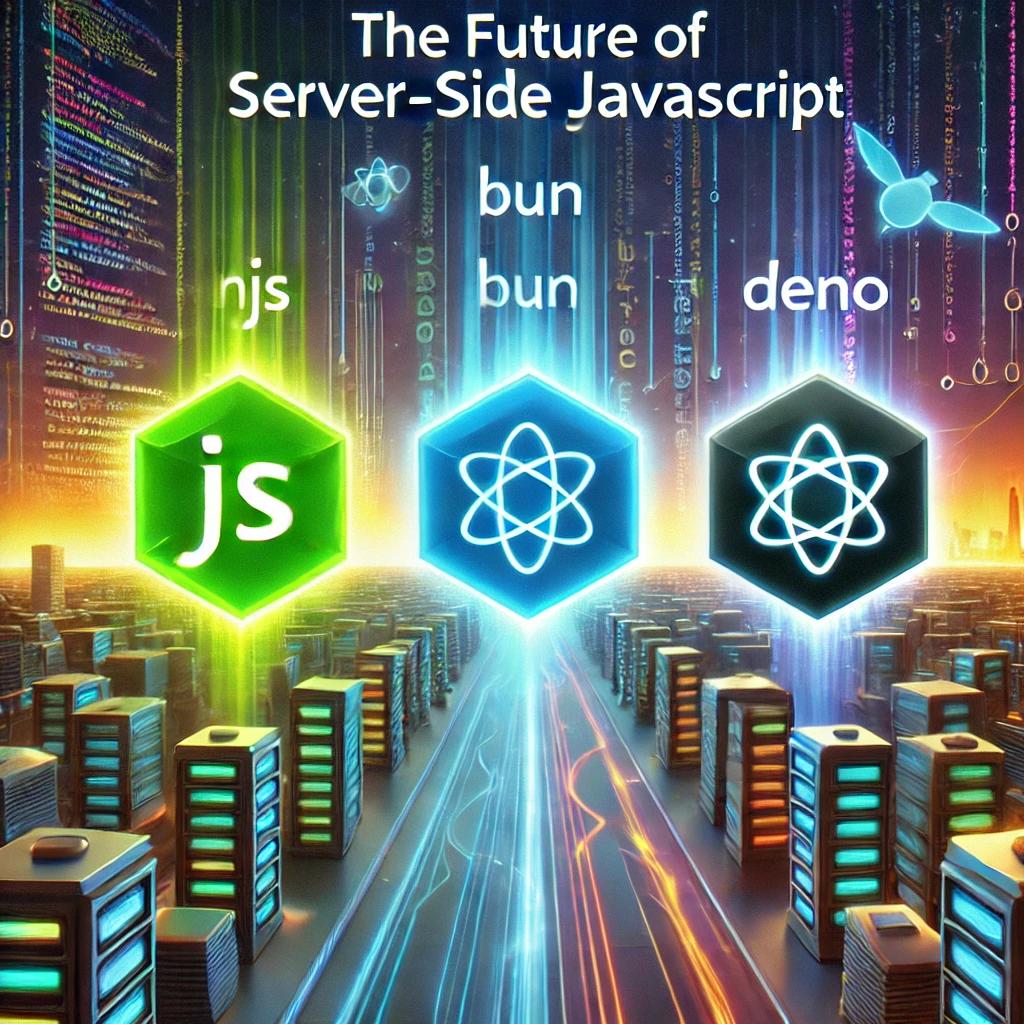Mastering Cursor: The Ultimate AI-Powered Code Editor Guide

Introduction 🧠
Welcome to the ultimate guide to Cursor, the AI-powered code editor that’s transforming the way developers write, debug, and optimize their code. Built as a fork of VS Code, Cursor integrates AI-driven features to make coding faster, smarter, and more intuitive.
Table of Contents 📖
1️⃣ Introduction to Cursor
- What is Cursor? 🤖
- How Cursor Revolutionizes Coding 🚀
- AI-Powered Development: The Future 🔮
2️⃣ Key Features of Cursor 🔥
- AI-Powered Code Generation 📝
- Smart Autocompletion 🚀
- Natural Language Code Search 🔍
- AI Debugging & Error Fixes 🛠️
- Intelligent Code Refactoring 🔄
- Cursor vs. VS Code: Key Differences ⚡
3️⃣ Getting Started with Cursor 🏗️
- Installation & Setup 🖥️
- Configuring Cursor for Maximum Productivity ⚙️
- Navigating the Cursor Interface 🎨
- Customizing Themes & Extensions 🎭
4️⃣ AI-Powered Coding in Cursor 🤖
- Writing Code with AI Assistance ✍️
- Generating Functions & Classes Instantly 🏎️
- AI-Driven Code Optimization & Refactoring 🚀
- Automating Repetitive Tasks 🔁
5️⃣ Debugging & Troubleshooting in Cursor 🐞
- AI-Powered Debugging & Fixes 🛠️
- How to Resolve Common Errors ⚡
- Enhancing Code Readability & Maintainability 🧐
6️⃣ Performance & Efficiency ⚡
- How Cursor Handles Large Codebases 📂
- CPU & RAM Usage Comparison 📊
- Speed Optimization Techniques ⏳
7️⃣ Advanced Features & Customizations 🎨
- Using Extensions & Plugins 🛍️
- GitHub Copilot vs. Cursor’s AI 🤔
- Integrating Cursor with Development Workflows 🔄
- Keyboard Shortcuts & Productivity Hacks ⌨️
8️⃣ Cursor for Teams & Collaboration 🤝
- AI-Enhanced Code Reviews 🔍
- Collaborative Coding Features 🧑💻
- Integrating Cursor with Git & Version Control 🔄
9️⃣ Cursor vs. Other Code Editors 🏆
- Cursor vs. VS Code ⚔️
- Cursor vs. JetBrains AI 🤖
- Cursor vs. GitHub Copilot 🔍
- Which One is Right for You? 🎯
🔟 Best Practices & Pro Tips 🏅
- How to Maximize Cursor’s AI Capabilities 🚀
- Optimizing Workflow for Speed & Accuracy ⚡
- Using AI Responsibly in Development 🛡️
🛑 Conclusion & Final Thoughts 🏁
- Should You Switch to Cursor? 🤔
- The Future of AI in Code Editing 🔮
- Final Verdict: Is Cursor Worth It? ✅
# Mastering Cursor: The Ultimate AI-Powered Code Editor Guide 🚀
1️⃣ Introduction to Cursor
What is Cursor? 🤖
Cursor is an AI-enhanced code editor designed to revolutionize the way developers write, debug, and optimize code. It is built on Visual Studio Code (VS Code) but takes it to the next level by integrating artificial intelligence directly into the development environment.
Unlike traditional editors, Cursor allows developers to interact with AI in real-time, generating, refactoring, and debugging code effortlessly. With powerful AI-driven features, Cursor is more than just an editor—it’s an intelligent coding assistant that enhances productivity, reduces errors, and accelerates software development.
How Cursor Revolutionizes Coding 🚀
Cursor introduces a new paradigm in software development by integrating AI seamlessly into the coding workflow. Here’s how it transforms the development experience:
✅ AI-Generated Code: Convert natural language prompts into functional code instantly. ✅ Context-Aware Autocompletion: Intelligent suggestions that improve code quality and efficiency. ✅ AI-Assisted Debugging: Detects and fixes bugs before they cause major issues. ✅ Natural Language Code Search: Find functions, variables, and logic faster than ever. ✅ Seamless VS Code Integration: Retains all VS Code features while enhancing them with AI-powered tools.
By embedding AI directly into the development process, Cursor helps developers write better code in less time, making it an essential tool for both beginners and professionals.
AI-Powered Development: The Future 🔮
Artificial intelligence is reshaping the way software is developed. As AI continues to evolve, Cursor is leading the charge by offering an editor that understands and adapts to the developer’s workflow.
🔮 Faster Development Cycles: AI minimizes repetitive coding tasks, allowing developers to focus on logic and architecture. 🔮 Error Reduction: AI-powered debugging catches mistakes before they become critical bugs. 🔮 Smarter Code Assistance: AI understands the context of your codebase, providing meaningful suggestions and insights.
With AI-driven development becoming the new standard, adopting Cursor means staying ahead of the curve and leveraging the latest advancements in AI coding assistance.
2️⃣ Key Features of Cursor 🔥
Cursor is packed with cutting-edge AI features designed to enhance productivity and streamline coding workflows. Here’s what makes it stand out:
AI-Powered Code Generation 📝
🚀 Generate code from natural language prompts – Simply describe what you need, and Cursor’s AI will generate fully functional code for you. 🛠️ Instant function and class creation – No need to manually write boilerplate code. 🔄 Refactor existing code intelligently – AI suggests improvements based on best practices.
Smart Autocompletion 🚀
⚡ AI-assisted autocompletion that suggests entire lines or functions. ✅ Context-aware predictions tailored to your coding style. 🎯 Faster coding with fewer errors, improving productivity.
Natural Language Code Search 🔍
🔎 Find functions, variables, and references using simple queries. 📂 No need for manual searching – AI scans your codebase instantly. 🤖 Boosts efficiency when working with large projects.
AI Debugging & Error Fixes 🛠️
🐞 AI detects and suggests fixes for common errors. 🔄 Automated debugging helps resolve issues faster. 🧐 AI-powered explanations make debugging clearer and easier to understand.
Intelligent Code Refactoring 🔄
🛠️ Suggests best practices for improving code structure. 📌 Refactor entire functions with a single command. ⚙️ Optimizes performance and maintainability automatically.
Cursor vs. VS Code: Key Differences ⚡
| Feature | Cursor | Visual Studio Code (VS Code) |
|---|---|---|
| AI Code Generation | ✅ Yes (Built-in AI) | ❌ No (Requires Extensions) |
| Smart Code Rewrites | ✅ Yes (Automated AI Refactoring) | ❌ No (Manual Editing Required) |
| Natural Language Search | ✅ Yes (AI-Powered) | ❌ No (Text-Based Only) |
| AI Debugging & Fixes | ✅ Yes (Automated AI Fixes) | ❌ No (Manual Debugging Required) |
| Performance Optimization | ✅ Yes (Optimized for AI Workflows) | ✅ Yes (Lightweight but No AI) |
| Extension Support | ✅ Yes (Compatible with VS Code Extensions) | ✅ Yes (Full Marketplace Support) |
| User Experience | 🚀 AI-Powered Enhancements | 🔵 Traditional Code Editor |
Cursor is not just an alternative to VS Code; it is a game-changing AI-powered IDE that takes coding efficiency to the next level. Whether you are a beginner looking for guidance or a professional developer aiming to speed up workflows, Cursor provides unmatched AI assistance to make coding easier, faster, and more efficient.
🚀 Stay ahead of the curve and supercharge your development workflow with Cursor!
3️⃣ Getting Started with Cursor 🏗️
Installation & Setup 🖥️
Setting up Cursor is quick and straightforward. Follow the steps below to install it on Windows, macOS, or Linux, using both GUI and command-line methods.
Step 1: Download Cursor
Visit the official Cursor website to download the latest version: 🔹 Website: Cursor.com 🔹 Select the appropriate version for Windows, macOS, or Linux.
Step 2: Install Cursor on Your System
🟦 Windows Installation
Method 1: GUI Installation
1️⃣ Open the downloaded .exe installer. 2️⃣ Follow the on-screen instructions to install Cursor. 3️⃣ Once installed, launch Cursor from the Start Menu or Desktop shortcut.
Method 2: Install via Windows Package Manager (winget)
winget install --id CursorTech.Cursor -e
👉 This command will download and install Cursor automatically.
Method 3: Install via Chocolatey
choco install cursor
👉 If you use Chocolatey as your package manager, this command installs Cursor seamlessly.
🍏 macOS Installation
Method 1: GUI Installation
1️⃣ Open the downloaded .dmg file. 2️⃣ Drag and drop Cursor into the Applications folder. 3️⃣ Open Cursor from Launchpad.
Method 2: Install via Homebrew
brew install --cask cursor
👉 This command downloads and installs Cursor automatically.
Method 3: Install via Terminal (Direct Download)
curl -L https://cursor.com/download/latest-mac -o cursor.dmg
hdiutil attach cursor.dmg
sudo cp -r /Volumes/Cursor/Cursor.app /Applications/
👉 This method manually downloads and installs Cursor if Homebrew is unavailable.
🐧 Linux Installation
Cursor is available for various Linux distributions. Follow the method specific to your OS.
Method 1: Install via .deb Package (Debian/Ubuntu-based distros)
👉 This method installs Cursor on Ubuntu, Debian, or similar distros.
wget https://cursor.com/download/latest-linux -O cursor.deb
sudo dpkg -i cursor.deb
sudo apt-get install -f # Fix missing dependencies🎨 Running Cursor AppImage on Linux – A Step-by-Step Guide 🎨
🔹 If you’ve downloaded the Cursor AppImage instead of the .deb package, you can still run it easily without installation by following these clear steps.
📌 Step 1: Install Required Dependencies
Cursor AppImage needs libfuse2. Install it if it’s not already installed:
sudo apt update
sudo apt install libfuse2
✅ Dependency installed successfully! 🎉
🔑 Step 2: Make the AppImage Executable
First, grant execution permissions to your AppImage file:
chmod +x Cursor-0.47.8-82ef0f61c01d079d1b7e5ab04d88499d5af500e3.deb.glibc2.25-x86_64.AppImage
✅ Executable permission granted! 🎉
🚀 Step 3: Move AppImage to a Common Location
Move your AppImage file to the /opt directory to keep things tidy:
sudo mv Cursor-0.47.8-82ef0f61c01d079d1b7e5ab04d88499d5af500e3.deb.glibc2.25-x86_64.AppImage /opt/cursor
sudo chmod +x /opt/cursor
✅ AppImage moved successfully!
🔧 Step 4: Resolve Sandbox Issues
To avoid sandbox errors, create a convenient wrapper script:
sudo nano /usr/local/bin/cursor
Paste the following content:
#!/bin/bash
/opt/cursor --no-sandbox "$@"
Save and close (Ctrl+X, then Y, then Enter).
Make the script executable:
sudo chmod +x /usr/local/bin/cursor
✅ Sandbox issue resolved! 🎯
📂 Step 5: Create a Desktop Shortcut
Create a shortcut so Cursor appears in your application menu:
mkdir -p ~/.local/share/applications
nano ~/.local/share/applications/cursor.desktop
Paste the following content:
[Desktop Entry]
Name=Cursor
Exec=/opt/cursor --no-sandbox
Icon=utilities-terminal
Type=Application
Categories=Development;IDE;
Save and close (Ctrl+X, Y, then Enter).
Update your applications menu:
update-desktop-database ~/.local/share/applications
✅ Shortcut created successfully! 🎉
🎯 Step 6: Launch Cursor
Now launch Cursor easily:
- Via Terminal:
cursor
- Via GUI: Press the Super key (Windows key), search for Cursor, and click to launch.
🎯 Cursor is now ready to use! 🚀✨
🔹 Enjoy coding with Cursor! 😃🎨
🎯 That’s It! You’re All Set! 🏆
Cursor should now run smoothly! 🚀 Let me know if you need any further assistance. 🐧✨
🔹 Enjoy coding with Cursor! 😃🎨
Method 2: Install via .rpm Package (Fedora/RHEL-based distros)
👉 This method installs Cursor on Fedora, CentOS, or RHEL-based systems.
wget https://cursor.com/download/latest-linux -O cursor.rpm
sudo rpm -i cursor.rpm
Method 3: Install via Arch User Repository (AUR) (Arch-based distros)
👉 This command installs Cursor on Arch Linux and Manjaro.
yay -S cursor-editor
Method 4: Run Cursor as an AppImage (Universal Method for all Linux distros)
👉 This method works on all Linux distros without installation.
wget https://cursor.com/download/latest-linux -O Cursor.AppImage
chmod +x Cursor.AppImage
./Cursor.AppImage
Step 3: Launch Cursor & Sign In
Once installed, open Cursor and sign in to enable AI-powered features.
🔹 Windows: Click on Cursor from the Start Menu or run:
cursor
🔹 macOS: Open Cursor from Launchpad or run:
open /Applications/Cursor.app
🔹 Linux: Run Cursor from the terminal:
cursor
Step 4: Sync Settings & Extensions
If you’re migrating from VS Code, you can import your settings:
1️⃣ Open Cursor and go to Settings → Sync Settings. 2️⃣ Sign in with your GitHub or Microsoft account. 3️⃣ Choose Import from VS Code. 4️⃣ All themes, keybindings, and extensions will be transferred.
🚀 You’re now ready to use Cursor! Explore AI-powered coding, debugging, and refactoring today!
Configuring Cursor for Maximum Productivity ⚙️
To get the best experience, configure Cursor to match your workflow: ✅ Enable AI Features: Activate AI-powered suggestions and debugging tools. ✅ Adjust Performance Settings: Optimize memory and CPU usage. ✅ Customize Keybindings: Use shortcuts to speed up navigation. ✅ Integrate with Git: Set up version control to streamline collaboration.
Navigating the Cursor Interface 🎨
Cursor retains the familiar VS Code layout with additional AI-enhanced functionalities:
- Explorer Panel: Manage files and folders with ease.
- Editor Window: The main coding area with AI-powered suggestions.
- AI Sidebar: Access smart code assistance and debugging tools.
- Terminal & Output Panel: Run commands and view real-time logs.
Customizing Themes & Extensions 🎭
Cursor supports VS Code themes and extensions, allowing full customization: 🎨 Themes: Choose from dark, light, and high-contrast themes. 🛠️ Extensions: Install VS Code extensions for additional functionality. ⚙️ Settings Sync: Transfer your favorite settings from VS Code.
4️⃣ AI-Powered Coding in Cursor 🤖
Writing Code with AI Assistance ✍️
✍️ Writing Code with AI Assistance
Cursor’s powerful AI understands natural language prompts, significantly speeding up your coding workflow:
💡 Generating Code from Prompts
Type a clear, natural language description, and Cursor instantly creates accurate, ready-to-use code snippets:
Example:
- Prompt:
Create a Python function for sorting a list - Cursor immediately generates a complete, efficient Python sorting function.
🎯 Smart Code Suggestions
As you type, Cursor intelligently predicts and recommends entire lines or blocks of code, drastically reducing manual typing and accelerating development.
✅ Effortlessly write accurate, high-quality code faster with Cursor’s AI assistance!
🤖 Integrating Cursor with Popular AI Chatbots – Step-by-Step Guide
Enhance your development workflow by integrating Cursor seamlessly with popular AI chatbots such as ChatGPT:
🚀 Step 1: Prepare Your AI Chatbot API Key
Obtain an API key from your preferred AI chatbot provider (e.g., OpenAI’s ChatGPT):
- Sign in or sign up at OpenAI.
- Generate and securely store your API key.
🔗 Step 2: Set Up the Integration in Cursor
- Open Cursor, navigate to:
- Settings → Integrations.
- Select AI Chatbot Integration:
- Choose your chatbot provider (e.g., OpenAI, ChatGPT).
- Enter the API key you previously generated.
- Click Connect to complete the integration.
✅ Your chatbot integration is now configured!
💬 Step 3: Using AI Chatbot in Cursor
To interact with your AI chatbot directly within Cursor:
- Open the chatbot panel:
- Press
Ctrl + Shift + Cor navigate to View → AI Chatbot.
- Press
- Start a conversation:
- Type your query or prompt directly into the chatbot window.
- Get real-time assistance, explanations, code snippets, and troubleshooting help instantly.
✅ Effortlessly leverage AI-powered assistance in your coding tasks!
📚 Step 4: Customizing Your Integration
Customize your integration settings:
- Adjust chatbot response settings in Cursor (Settings → Integrations).
- Set custom commands and quick actions to trigger specific chatbot functionalities.
✅ Tailor the AI experience to your workflow!
🏎️ Generating Functions & Classes Instantly
Cursor significantly boosts productivity by eliminating the need for manually typing repetitive code. Here’s how you can instantly generate and manage functions and classes:
🚀 Step 1: Quickly Define Classes and Methods
- Open your project in Cursor.
- Place your cursor in the desired file.
- Use natural language to define a class or method, for example:
Create a Python class named "Car" with attributes "make", "model", and "year".- Cursor automatically generates the complete class structure instantly.
✅ Minimal input, maximum output!
⚙️ Step 2: Generate Boilerplate Code Automatically
- Start typing a method or function name and a brief description:
Generate a constructor for the "Car" class with all attributes initialized.- Cursor immediately provides well-structured, complete boilerplate code.
✅ No more manual boilerplate writing!
✨ Step 3: Refactor Existing Functions Easily
- Highlight the function or method you wish to refactor.
- Right-click and select Refactor or use the AI prompt:
Refactor the following method for better readability.- Cursor’s AI quickly suggests cleaner, more efficient code.
✅ Instant code improvements!
Cursor significantly boosts productivity by eliminating the need for manually typing repetitive code. Here’s how you can instantly generate and manage functions and classes:
🚀 Step 1: Quickly Define Classes and Methods
- Open your project in Cursor.
- Place your cursor in the desired file.
- Use natural language to define a class or method, for example:
Create a Python class named "Car" with attributes "make", "model", and "year".- Cursor automatically generates the complete class structure instantly.
✅ Minimal input, maximum output!
⚙️ Step 2: Generate Boilerplate Code Automatically
- Start typing a method or function name and a brief description:
Generate a constructor for the "Car" class with all attributes initialized.- Cursor immediately provides well-structured, complete boilerplate code.
✅ No more manual boilerplate writing!
✨ Step 3: Refactor Existing Functions Easily
- Highlight the function or method you wish to refactor.
- Right-click and select Refactor or use the AI prompt:
Refactor the following method for better readability.- Cursor’s AI quickly suggests cleaner, more efficient code.
✅ Instant code improvements!
AI-Driven Code Optimization & Refactoring 🚀
Cursor helps improve code structure with AI-powered refactoring: 🛠️ Identifies redundant code and suggests improvements. 📌 Optimizes performance with one-click AI enhancements. 🔄 Refactors entire functions while maintaining logic integrity.
Automating Repetitive Tasks 🔁
Cursor can automate tasks that typically require manual intervention: 🤖 Batch edit variables and function names effortlessly. ⏳ Generate documentation from code comments. ⚙️ Automate formatting and indentation to maintain consistency.
5️⃣ Debugging & Troubleshooting in Cursor 🐞
AI-Powered Debugging & Fixes 🛠️
Cursor revolutionizes debugging with AI-assisted error detection and fixes, helping developers resolve issues faster and more efficiently. Key debugging features include:
✅ Instant Error Detection – Cursor highlights errors in real time and suggests possible fixes. ✅ Automated Fix Suggestions – AI-driven recommendations for resolving syntax and logic errors. ✅ Code Explanation Tool – Get insights into why an error occurred and how to fix it. ✅ Smart Debugging Workflow – Debug multiple issues simultaneously with AI-powered guidance. ✅ AI-Based Log Analysis – Identify patterns in logs and errors for quick resolution.
How to Resolve Common Errors ⚡
Cursor provides an intuitive approach to fixing common coding errors:
🔹 Syntax Errors: Cursor identifies missing semicolons, incorrect function calls, and misplaced brackets, offering one-click fixes. 🔹 Logic Errors: AI suggests corrections based on expected logic patterns and common programming best practices. 🔹 Performance Issues: Cursor highlights inefficient code and provides AI-driven optimization suggestions. 🔹 Debugging Code Snippets: Use AI to analyze problematic code blocks and receive explanations for quick troubleshooting. 🔹 Integrated AI Chat for Debugging: Ask Cursor’s AI assistant for help in understanding errors and applying fixes.
Enhancing Code Readability & Maintainability 🧐
Well-structured code is easier to debug and maintain. Cursor enhances readability with:
📌 Automatic Code Formatting: Cursor enforces indentation and spacing best practices. 📌 Refactoring Suggestions: AI recommends improvements for cleaner and more maintainable code. 📌 Inline Documentation: Automatically generate comments explaining complex code sections. 📌 Consistent Naming Conventions: AI suggests better variable and function names for clarity. 📌 Code Complexity Analysis: Identify and simplify overly complicated logic structures.
6️⃣ Performance & Efficiency ⚡
Optimizing performance is key to maintaining a smooth development workflow. Cursor enhances efficiency with intelligent performance optimization tools.
How Cursor Handles Large Codebases 📂
Cursor is designed to handle enterprise-level projects efficiently, with features such as: ✅ Optimized Search & Navigation – Quickly locate files and functions in large repositories. ✅ Smart Caching Mechanisms – Reduce load times when working with extensive codebases. ✅ AI-Powered Refactoring – Modify multiple code sections simultaneously without affecting stability. ✅ Efficient Memory Management – Reduce resource consumption when working on demanding projects.
CPU & RAM Usage Comparison 📊
Cursor is optimized for performance without excessive resource consumption:
| Feature | Cursor | Traditional Code Editors |
|---|---|---|
| AI Assistance | ✅ Yes | ❌ No |
| Memory Efficiency | ✅ High | ⚠️ Moderate |
| Large Project Support | ✅ Optimized | ❌ Slower Performance |
| Processing Speed | 🚀 Fast | ⚡ Standard |
| Multi-Threading Support | ✅ Yes | ❌ No |
Speed Optimization Techniques ⏳
Cursor ensures fast performance with built-in optimizations:
🚀 On-the-Fly AI Suggestions – AI-assisted coding without performance lags. 📌 Efficient Syntax Parsing – Reduces load on CPU during real
7️⃣ Advanced Features & Customization’s 🎨
Using Extensions & Plugins 🛍️
Cursor supports a vast library of extensions and plugins, just like VS Code, allowing developers to enhance their coding experience:
✅ VS Code Marketplace Compatibility – Install popular VS Code extensions directly in Cursor. ✅ AI-Powered Extensions – Take advantage of AI-enhanced plugins for debugging, refactoring, and optimization. ✅ Custom Snippets & Templates – Create and integrate reusable code snippets to speed up development. ✅ Performance Optimization Plugins – Use AI-assisted tools to optimize memory and execution efficiency. ✅ Language-Specific Extensions – Improve syntax highlighting, debugging, and auto-completions for different languages.
GitHub Copilot vs. Cursor’s AI 🤔
While GitHub Copilot provides AI-powered coding assistance, Cursor’s AI offers a more seamless and deeply integrated experience:
| Feature | Cursor AI 🤖 | GitHub Copilot 🚀 |
|---|---|---|
| Built-in AI Support | ✅ Yes (Native AI) | ❌ No (Requires Extension) |
| Code Refactoring | ✅ Yes (Automated & Context-Aware) | ⚠️ Limited |
| Natural Language Search | ✅ Yes (Query Codebase with AI) | ❌ No |
| Real-Time Debugging | ✅ Yes | ❌ No |
| Performance Impact | ✅ Optimized for AI Workflows | ⚠️ Slightly Heavy |
| Standalone Usage | ✅ Fully Functional | ❌ Requires VS Code |
🚀 Cursor’s AI is built into the editor, eliminating the need for external AI tools while offering a more powerful debugging, search, and refactoring experience.
Integrating Cursor with Development Workflows 🔄
Cursor is designed to integrate seamlessly with modern development workflows, enabling:
🔹 Git & Version Control – AI-powered Git suggestions for commit messages and code reviews. 🔹 CI/CD Pipelines – Use AI-generated scripts to automate deployment tasks. 🔹 Task Automation – AI-assisted automation of repetitive coding tasks. 🔹 API & Database Integration – Enhanced support for managing backend connections.
By embedding Cursor into your workflow, you boost efficiency and streamline development using AI-driven automation.
⌨️ Keyboard Shortcuts & Productivity Hacks ⌨️
🚀 1. AI Code Suggestions
- Shortcut:
Ctrl + Space - Instantly trigger AI-powered autocompletion.
- Rapidly complete lines or entire functions without manual typing.
✅ Boost your coding speed with smart suggestions!
⚡ 2. AI Code Refactoring
- Shortcut:
Ctrl + Alt + R - Quickly obtain AI-driven refactoring suggestions.
- Improve readability, efficiency, and maintainability of your code.
✅ Clean and efficient code instantly!
🔍 3. Natural Language Code Search
- Shortcut:
Ctrl + Shift + S - Effortlessly search your codebase using simple natural language queries.
- Quickly find functions, classes, or logic segments without needing exact matches.
✅ Find what you need, faster!
📌 4. Quick Fixes
- Shortcut:
Alt + Enter - Instantly apply AI-recommended bug fixes and improvements.
- Swiftly resolve common coding errors with a single keystroke.
✅ Rapid bug resolution at your fingertips!
🎯 Pro Tips for Enhanced Productivity:
- Customize Keybindings:
- Navigate to Settings → Keyboard Shortcuts to personalize shortcuts for your workflow.
- Leverage Command Palette:
- Press
Ctrl + Shift + Pto access all Cursor commands instantly.
- Press
- Use Multi-cursor Editing:
- Press
Alt + Clickto place multiple cursors simultaneously, editing multiple lines at once.
- Press
✅ Tailor Cursor to your workflow for maximum productivity!
8️⃣ Cursor for Teams & Collaboration 🤝
AI-Enhanced Code Reviews 🔍
Cursor simplifies the code review process with AI-powered analysis:
✅ AI-Powered Suggestions – AI identifies optimization opportunities in code reviews. ✅ Automated Code Quality Checks – Detects inconsistent formatting, inefficient logic, and vulnerabilities. ✅ AI-Generated Review Summaries – Automatically summarizes pull requests for easier decision-making. ✅ Context-Aware Code Explanations – AI explains complex code changes to reviewers.
Collaborative Coding Features 🧑💻
Cursor enables seamless collaboration with built-in features for teams:
🔹 Real-Time Pair Programming – Collaborate with team members using AI-assisted suggestions. 🔹 Shared AI-Powered Workspaces – Maintain shared workspaces with teamwide AI-powered recommendations. 🔹 Live Debugging Sessions – AI assists multiple developers in debugging the same project in real time. 🔹 Comment & Annotation System – AI generates inline comments for suggested fixes and improvements.
🔄 Integrating Cursor with Git & Version Control
Cursor enhances your Git workflow by leveraging AI-powered features to simplify and streamline version control.
🚀 Step 1: Set Up Git in Cursor
Make sure Git is installed on your system. If not, install it:
sudo apt install gitConfigure your Git user details if not already set:
git config --global user.name "Your Name"
git config --global user.email "youremail@example.com"🔗 Step 2: Connect Cursor with GitHub or GitLab
- Open Cursor, go to the menu bar:
- Navigate to Settings → Integrations.
- Connect your Git provider:
- Choose GitHub or GitLab.
- Authenticate by signing into your account.
✅ Cursor is now connected directly to your cloud-based repositories!
✨ Step 3: Using AI-Assisted Commit Messages
Cursor automatically generates commit messages:
- Make changes to your files in Cursor.
- Open the Git panel in Cursor (
Ctrl + Shift + G). - Stage your changes, then click Commit.
- Cursor automatically suggests an AI-generated commit message based on your changes.
- Review or edit if needed, then confirm the commit.
✅ Effortless commit messages!
🔄 Step 4: AI-Assisted Merge Conflict Resolution
If merge conflicts arise, Cursor intelligently helps resolve them:
- Attempt a merge or pull updates from the remote branch:
git pull origin main - Cursor detects conflicts automatically:
- Conflicts will be clearly highlighted.
- Click Resolve to see AI-powered recommendations.
- Accept recommended resolutions or manually adjust conflicts, then confirm the merge.
✅ Smart conflict resolutions in seconds!
📜 Step 5: Explore AI-powered Code History Insights
Cursor’s AI summarizes key changes from your Git history, enhancing clarity:
- Navigate to the Git History panel in Cursor:
- Click on a commit to reveal an AI-generated summary of key changes.
- Quickly understand the essence of each commit without manually reviewing every line.
✅ Efficient, clear, and concise commit insights!
☁️ Step 6: Push Changes to GitHub or GitLab
Easily push your commits directly from Cursor:
- After committing, click Push within Cursor’s Git panel:
git push origin main - Cursor seamlessly syncs your local and remote repositories.
✅ Simple and efficient synchronization!
🎯 You’re Set!
Your Cursor environment is now fully integrated with Git, enhancing your version control workflow through intuitive AI-powered features.
Happy coding! 🚀✨
🚀 Cursor is not just an editor—it’s an AI-powered collaboration and productivity powerhouse. Experience the future of coding today!
9️⃣ Cursor vs. Other Code Editors 🏆
Cursor vs. VS Code ⚔️
Cursor is a fork of VS Code, meaning it retains all the powerful features of VS Code while integrating AI-powered enhancements. Here’s a direct comparison:
| Feature | Cursor | VS Code |
|---|---|---|
| Built-in AI Assistance | ✅ Yes | ❌ No (Requires Copilot or extensions) |
| Code Autocompletion | 🤖 AI-driven | ⏳ Standard |
| Natural Language Code Search | ✅ Yes | ❌ No |
| AI Debugging & Fixes | ✅ Yes | ❌ No (Manual Debugging) |
| Extension Support | ✅ Yes (VS Code Extensions Supported) | ✅ Yes |
| Performance Optimization | 🚀 AI-Optimized | ⚡ Lightweight |
📝 Verdict: If you prefer AI-powered development, Cursor is the superior choice. If you want a manual workflow with full extension control, VS Code remains a solid option.
Cursor vs. JetBrains AI 🤖
JetBrains’ AI is known for deep code insights, but Cursor excels in real-time AI assistance. Here’s how they compare:
| Feature | Cursor | JetBrains AI (IntelliJ, PyCharm) |
|---|---|---|
| AI-Generated Code Suggestions | ✅ Yes | ✅ Yes |
| Integrated AI Debugging | ✅ Yes | ❌ No |
| Performance & Speed | ⚡ Lightweight | ⏳ Heavy (High Memory Usage) |
| Pricing | 🆓 Free & Paid | 💰 Paid Only |
| Extension Marketplace | ✅ VS Code Marketplace | ❌ Limited |
💡 Verdict: JetBrains AI is great for deep static analysis, but Cursor provides a real-time AI-enhanced coding experience with lower resource usage.
Cursor vs. GitHub Copilot 🔍
GitHub Copilot is one of the leading AI coding assistants, but how does it compare to Cursor?
| Feature | Cursor | GitHub Copilot |
|---|---|---|
| AI-Powered Code Generation | ✅ Yes | ✅ Yes |
| Natural Language Search | ✅ Yes | ❌ No |
| AI-Assisted Debugging | ✅ Yes | ❌ No |
| Pricing | 🆓 Free & Paid | 💰 Paid Only |
| Works Offline | ✅ Yes | ❌ No (Cloud-Based) |
| Integrated IDE | ✅ Built-in | ❌ External Plugin |
🚀 Verdict: If you want an AI-enhanced IDE, Cursor is the better choice. If you already use VS Code and need AI code suggestions only, Copilot may be a good fit.
Which One is Right for You? 🎯
- Choose Cursor if you want an AI-powered development environment that improves coding, debugging, and refactoring.
- Choose VS Code if you need manual control and a lightweight IDE.
- Choose JetBrains AI if you prefer deep code analysis and static insights.
- Choose GitHub Copilot if you only need AI-powered autocompletion in VS Code.
🔟 Best Practices & Pro Tips 🏅
How to Maximize Cursor’s AI Capabilities 🚀
🔹 Enable AI Autocompletion – Let Cursor generate code efficiently. 🔹 Use AI for Debugging – Catch and fix issues instantly with AI suggestions. 🔹 Leverage AI for Refactoring – Improve readability and optimize performance. 🔹 Automate Repetitive Tasks – Generate boilerplate code with AI-powered templates.
Optimizing Workflow for Speed & Accuracy ⚡
✅ Use Keyboard Shortcuts – Speed up coding with custom keybindings. ✅ Customize Themes & Layout – Optimize your interface for better productivity. ✅ Sync with GitHub & GitLab – Integrate AI-powered commits and version control. ✅ Leverage AI Code Reviews – Let AI assist in reviewing PRs and improving quality.
Using AI Responsibly in Development 🛡️
🤖 Verify AI-Generated Code – Ensure it follows best practices and security guidelines. 📌 Avoid Over-Reliance on AI – Use AI as a coding assistant, not a replacement. 🔍 Regularly Review Code Quality – Manually inspect AI-generated code for errors. 📚 Stay Updated with AI Features – Continuously learn and adopt new AI-driven enhancements.
🛑 Conclusion & Final Thoughts 🏁
Should You Switch to Cursor? 🤔
Cursor is an AI-powered coding revolution, but it may not be for everyone.
✅ You should switch to Cursor if:
- You want an AI-enhanced IDE that improves efficiency and debugging.
- You’re looking for an alternative to GitHub Copilot that works natively in an editor.
- You need seamless integration with VS Code extensions and features.
🚫 You might not need Cursor if:
- You prefer manual coding workflows.
- You already use JetBrains AI for deep code analysis.
- You need a minimal, non-AI-enhanced IDE.
The Future of AI in Code Editing 🔮
AI-powered development tools like Cursor are reshaping the way developers write code. In the future, we can expect:
🔹 Smarter AI Autocompletions – AI will predict entire project structures. 🔹 Enhanced AI Debugging – AI will proactively detect security vulnerabilities. 🔹 Full Codebase Understanding – AI will provide deeper insights into complex architectures. 🔹 More Personalized AI Suggestions – Cursor will adapt to individual coding styles over time.
Final Verdict: Is Cursor Worth It? ✅
🚀 YES! Cursor is a game-changer for developers who want AI-powered assistance for writing, debugging, and optimizing code.
🔹 Best for: Developers who want a smarter, AI-assisted IDE. 🔹 Not for: Those who prefer fully manual workflows.
💡 Final Thought: AI is the future of coding, and Cursor is leading the revolution. Try it today and supercharge your development workflow! 🚀










